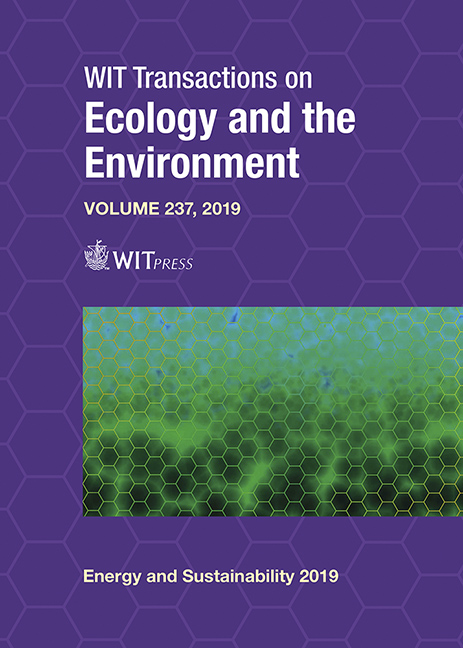ENERGY AND SUSTAINABILITY ASSESSMENT OF MUNICIPAL WASTEWATER TREATMENT UNDER CIRCULAR ECONOMY PARADIGM
Price
Free (open access)
Transaction
Volume
237
Pages
12
Page Range
109 - 120
Published
2019
Size
1,124 kb
Paper DOI
10.2495/ESUS190101
Copyright
WIT Press
Author(s)
ANDREY V. KISELEV, ELENA R. MAGARIL, ELENA CRISTINA RADA
Abstract
Climate change and anthropogenic pollution have put limited water resources under pressure. Lack of basic sanitation services as well as the discharge of improperly treated effluent from wastewater treatment plants (WWTP) result in the deposition of large amounts of organic matter and nutrients, which have major detrimental effects on health. Wastewater treatment (WWT) can reduce water pollution but at the cost of increasing energy consumption and the corresponding atmosphere and climate problems. Sustainable WWT management is a global challenge to preserve fresh water and decrease energy consumption. Nowadays it becomes obvious that existing WWTP operation model, based on the linear “take–make–dispose” pattern, is no longer sustainable. Furthermore, disposal of a product in landfill means that all residual energy is lost. The adoption of circular economy (CE) practices with its 3R principles of reducing, reusing and recycling material appears as a timely, relevant and practical option to meet the goals of sustainable development. WWTP is a critical element in CE implementation policy and to measure the degree of “circularity” there is a need for indicators. This study considers the holistic overview of measuring the progress of CE implementation at WWTP under 3R principles using life cycle analysis (LCA) and material flow analysis (MFA) frameworks. The paper presents the principles of CE indicators set construction using managerial approach. The proposed set of indicators and integral circularity index are studied under three scenarios, based on real performance of northern and southern WWTP in Ekaterinburg, Russia. This study provides an efficient assessment tool of CE progress, which is rather simple for calculation and interpretation and suitable for the use of wide range of stakeholders.
Keywords
circular economy, wastewater treatment, sustainable management, energy flow, material flow, assessment, circularity index





